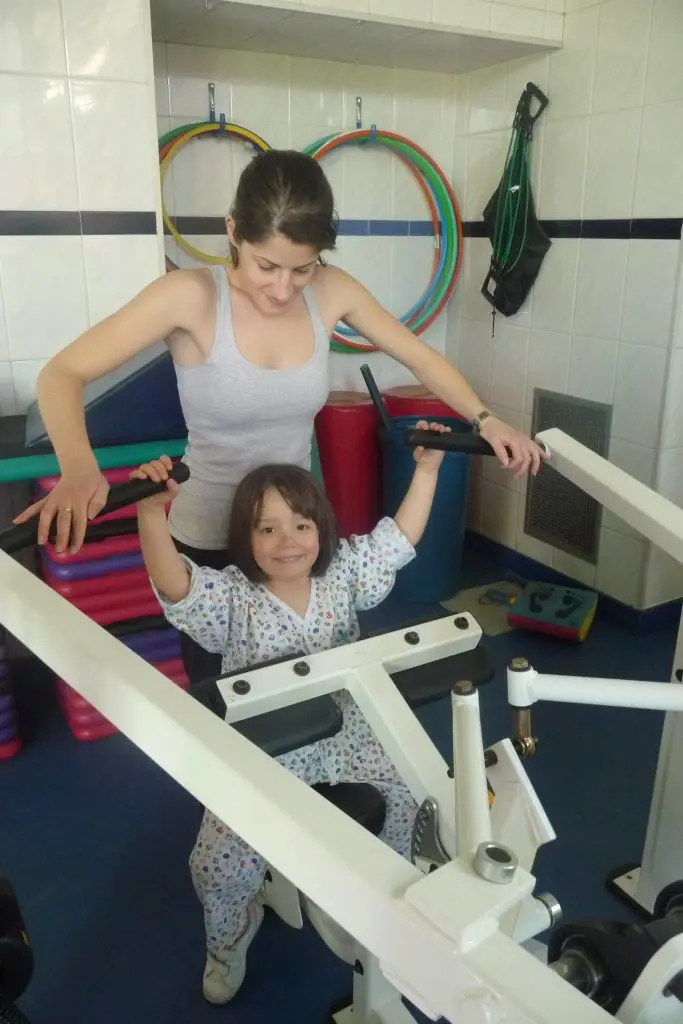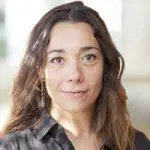HEALTH| 10.02.2021
Carmen Fiuza: “Childhood cancer is a Rare Disease”
This researcher at the 12 de Octubre Hospital Research Institute in Madrid (“i+12”) has led a study that shows the benefits of exercise to improve quality of life among children who are currently undergoing or have successfully completed treatment for cancer. Childhood cancer is a rare disease that unfortunately continues to extract a cruel toll, especially during this period of the COVID pandemic. In 2019, together with her multidisciplinary team, she was awarded an Ignacio H. de Larramendi Research Grant by Fundación MAPFRE. She transmits a combination of professional discipline, clarity and hope. She is keen to point out that the overall cure rate for pediatric cancer has improved in recent decades from under 60 percent to 80 percent, which represents major progress offering great hope for the future. She hopes that it will one day be 100 percent and seeks to minimize the side effects of treatment with an infallible remedy: physical exercise.
To summarize her project…
Over a decade ago researchers from the Physical Activity and Health Research Group (PaHerg), led by Professor Alejandro Lucía, started discussions with oncologists at the Niño Jesús University Children’s Hospital on how physical exercise could contribute to finding a more effective cure for childhood cancer. It sounded like a crazy idea. How was a child newly diagnosed with cancer and seriously weakened by chemotherapy, radiation therapy and all those other aggressive treatments, going to start taking exercise? Conventional wisdom at the time dictated that they should rest and stay in bed! Family members were overprotective. But, as often happens in science, that crazy idea really set the ball rolling. We began to conduct studies at the hospital with children who had survived the disease by offering them an individualized exercise program. We saw that exercise was safe for them and had remarkable benefits, not only at a functional level—in terms of building up muscles, aerobic skills and coping with daily activities—but it also improved their quality of life. Since then, we’ve created various projects aimed at patients and survivors of childhood cancer. Our goal is to combine supplementary therapy with conventional treatment from the moment the disease is first diagnosed to several years after it has been in remission. This is the basis of the project funded by Fundación MAPFRE.
Does improving children’s happiness and well-being help them fight the disease?
We work within a multidisciplinary team that brings together researchers and graduates in physical activity and sports sciences, led by Elena Santana, pediatricians specializing in oncology and cardiology, nurses and psychologists. When we administer an exercise program, it’s always linked to psychological support, both for the patients and for their families. The emotional component is fundamental, because patients have to face treatment that, depending on the form it takes, is likely to last a very long time and will modify their emotional state. Before COVID, the exercise programs also included group training, with the resulting psychological benefit for children and adolescents from sharing the same problem or situation with their peers. This also had a positive impact on family members as they could see for themselves how their children’s physical condition was improving and also had the chance to have some time for themselves, going for a walk through El Retiro park or stopping for a coffee. This represents a welcome break for people who spend 24 hours a day looking after another person.
“Many types of adult cancer are at least partly due to the patient’s lifestyle in the decades prior to the disease, while pediatric cancer remains a rare disease”
How do children’s energy, enthusiasm and resilience contribute to their recovery process?
We treat children from age 4, adolescents and young people up to 21 years old. Young children and adolescents are completely different. Younger children don’t know what cancer is. They learn about it little by little. With adolescents, it’s more difficult. They face the double challenge of managing adolescence in addition to a disease that they know can be life-threatening. Exercise helps them to express their anger against the world. It’s a challenge for us too. At that age, adolescents tend to reduce physical activity, especially girls. But once we get them into the habit of going to the gym, they love it!

This year we need an extra ray of hope, because the situation is very concerning, with cancer treatment taking second place to the pandemic. Have you experienced this in your team?
We’re seeing that the number of diagnoses has fallen compared to pre-pandemic figures. Does this mean that there are no children with cancer? Not necessarily. It may partially reflect the fact that the pandemic is keeping families from coming to hospital. One of the characteristics of the disease is that some of its symptoms are confused with more ordinary ones, such as fever or headaches. And this is in addition to people’s reluctance to come to hospital. The concern is that when these children do come, their cancer may be at a more advanced stage and the diagnosis could be more serious. We worry about this here at the 12 de Octubre or Niño Jesús Children’s Hospitals. Children who are diagnosed are cared for using all possible means. COVID-19 has not reduced the quality of service for treating childhood cancer.
(Photo: Carmen Fiuza Archive)
“But we continue to work with the children remotely and we’re seeing a response. Now relatives are much more involved”
What can you tell us about the main causes of childhood cancers? How can we promote prevention?
Many types of adult cancer are at least partly due to the patient’s lifestyle in the decades prior to the disease, while pediatric cancer remains a rare disease. One of the major barriers was that research wasn’t focused on what we experience here, but on the more common forms of disease. Children were being given the same sort of courses of treatment and protocols as adults. Treatment for childhood cancer is now specialized.
Many factors can contribute to the underlying cause and they are often unknown. They are often related to genetic mutations, genes that cause the growth of certain cells to get out of control. In adults, it occurs due to an accumulation of factors and the simple process of aging. So prevention begins even before children are born and needs to continue so they can acquire healthy habits. That’s a tremendous responsibility. Educating them to develop a healthy lifestyle means encouraging everything we are biologically designed for: feeding ourselves in a healthy way and moving around regularly.
What signs should we watch out for?
Without knowing anything about cancer, what families often tell us is that they had noticed abnormal symptoms in the child or adolescent concerned. Recurrent headaches, lumps, tiredness, apathy, loss of vision, balance or clear speech. If you notice any of these symptoms, you should seek medical advice. Childhood cancers are divided primarily into two main groups: solid tumors and hematologic tumors. Each type of cancer is different, as is each diagnosis, prognosis and treatment. In children under 15 years old, the most common cancers are leukemias, lymphomas and tumors of the central nervous system. A lot of progress has been made in diagnoses, the molecular characterization of different tumors and personalized treatments, and in recent decades also in terms of new drugs, surgical techniques, radiation and patient support (including physical treatment, psycho-cognitive programs and nursing care). Everything has improved. We have progressed from a childhood cancer survival rate of under 60 percent a few decades ago to 80 percent today.
Can you tell us about any complementary therapies in children’s cancer treatments?
Our group works on studying exercise and other therapies related to health counseling for childhood cancer. We believe that when you include exercise right from the time of the first diagnosis and throughout the treatment, patients improve more quickly and have better odds of survival. We need to reduce the side effects of treatments. An increased number of survivors are cured, it’s true, but they suffer long-term consequences: increased risk of cardiovascular disease, obesity, diabetes, depression, osteoporosis, lung toxicity. Children cured at the age of 9 still have a whole lifetime in front of them in which to develop all these effects. This type of exercise therapy minimizes these risks and reduces hospitalization time. Hospitals like the Niño Jesus and the 12 de Octubre prescribe exercise because of its benefits not only at a psycho-cognitive level, but also at a biological and molecular level, since it reduces the levels of systemic inflammation and improves the operation of the immune system. It improves the life of the child and of family members alike, and reduces the cost to the health system.
What impact has the pandemic had on families and cancer patients in need of hospitalization?
Childhood cancer is a tremendous shock in any situation. And even more so now, because the treatment these children receive compromises their immune system and prolongs their periods of isolation. Those of us who participate in exercise programs are affected, because it makes it difficult for us to “get children out of the hospital environment.” We can’t take them to the gym like we used to, which besides letting the children be with their peers and spend time with them, also gave their families some free time, allowing them to go for a walk or to have a coffee. We’ve lost the human contact, and the smiles, but we continue to work with the children remotely and we’re seeing a response. Now relatives are much more involved, because they give feedback and there’s a connection between parents, grandparents and siblings. This is another way of getting there, and at least we know now that there are other options.
What is the health care provider’s life like right now?
If you were very careful not to transmit infections to patients before, the precautions are extreme now. It puts added pressure on clinical assistants, from oncologists to nurses and caregivers. You have a sense of brutal responsibility. We coaches and researchers spend all day like that. We get home from work, then we do our shopping, and the day’s over. Because children’s lives are at stake.
What developments would you like to see in the next decade?
Survival rates at 100 percent. That when a parent or guardian is told that their child has cancer, we can say: don’t worry, we have a treatment option to cure your child. That we professionals extend our vision and understand that pharmacological treatment is very important, but there are other therapies that will improve the patient’s quality of life. That we continue to improve the multidisciplinary level of work and provide more financial support and research to pediatric cancer, so that it reaches the same level of resources as adult cancer. In this regard, contributions from Fundación MAPFRE and other specialists, such as Fundación Aladina or Fundación Unoentrecienmil offer a fine example of commitment.

